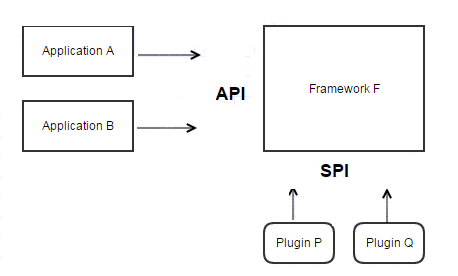The class java.util.ServiceLoader is based on SPI (Service Provider Interface) pattern.
SPI is an API intended to be implemented or extended by plugins/modules. Let's understand that with an example.
Assume we are designing an application framework F. We want F to be extensible. We will create API interfaces/classes visible to outside world and typically called Services to describe what F does. A particular application A will call the API to achieve a goal. A set of same interfaces/classes (SPI) of F are treated as extension points by plugins and modules. These plugins/modules are typically called Service Provider. They either provide concrete implementation or extend those interfaces/classes of the framework to provide functionality.

Discovering and Loading Services
The service provider must specify what implementation of a SPI they are providing. Suppose there's a service interface com.service.MyService and a provider implements that interface as com.provider.MyServiceImpl. Before packaging his project, the provider has to include a file under META-INF/services. The file name should be fully qualified service name without any extension. Inside file the provider has to specify fully qualified implementation. The content of file META-INF/services/com.service.MyService will look like this:
com.provider.MyServiceImpl
The SPI implementation is typically packaged in a jar and has to be in class path of the discovering code:
ServiceLoader<MyService> services =
java.util.ServiceLoader.load(MyService.class);
services.forEach(service -> {//use service instance here
}
);
The above service loading is typically performed in API framework F itself.
ServiceLoader implements java.lang.Iterable. We can iterate all service implementations and use them in whatever way we want to.
Example Project
In this example we are going a create a framework style Ui application. The application will discover the implementation of View interface and will display them as a JavaFx user interface. This API project itself provides an implementation DefaultView. Each discovered view implementation is displayed as a menu item. Clicking on the menu item shows the main view. Dependencies and Technologies Used:
|